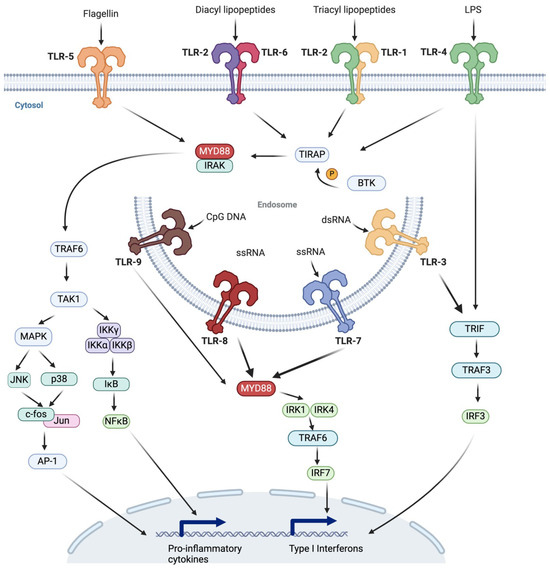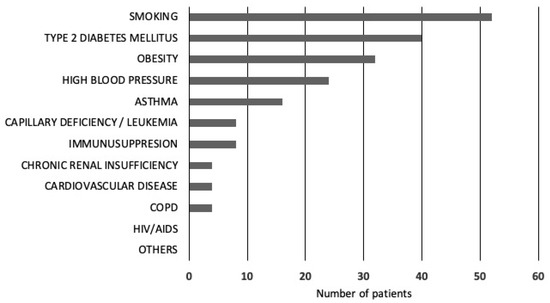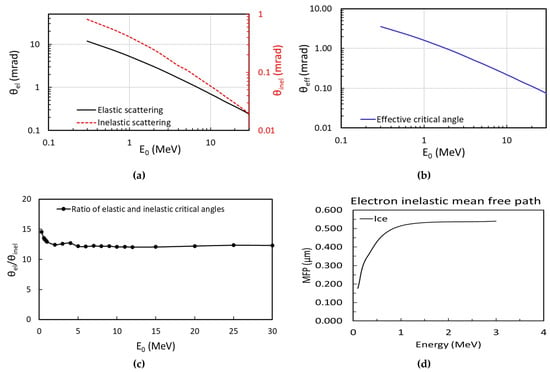The
R2R3-MYB gene family, encoding plant transcriptional regulators, participates in many metabolic pathways of plant physiology and development, including flavonoid metabolism and anthocyanin synthesis. This study proceeded as follows: the
JrR2R3-MYB gene family was analyzed genome-wide, and the family members were identified and
[...] Read more.
The
R2R3-MYB gene family, encoding plant transcriptional regulators, participates in many metabolic pathways of plant physiology and development, including flavonoid metabolism and anthocyanin synthesis. This study proceeded as follows: the
JrR2R3-MYB gene family was analyzed genome-wide, and the family members were identified and characterized using the high-quality walnut reference genome “Chandler 2.0”. All 204
JrR2R3-MYBs were established and categorized into 30 subgroups via phylogenetic analysis.
JrR2R3-MYBs were unevenly distributed over 16 chromosomes. Most
JrR2R3-MYBs had similar structures and conservative motifs. The
cis-acting elements exhibit multiple functions of
JrR2R3-MYBs such as light response, metabolite response, and stress response. We found that the expansion of
JrR2R3-MYBs was mainly caused by WGD or segmental duplication events. Ka/Ks analysis indicated that these genes were in a state of negative purifying selection. Transcriptome results suggested that
JrR2R3-MYBs were widely entangled in the process of walnut organ development and differentially expressed in different colored varieties of walnuts. Subsequently, we identified 17 differentially expressed
JrR2R3-MYBs, 9 of which may regulate anthocyanin biosynthesis based on the results of a phylogenetic analysis. These genes were present in greater expression levels in ‘Zijing’ leaves than in ‘Lvling’ leaves, as revealed by the results of qRT-PCR experiments. These results contributed to the elucidation of the functions of
JrR2R3-MYBs in walnut coloration. Collectively, this work provides a foundation for exploring the functional characteristics of the
JrR2R3-MYBs in walnuts and improving the nutritional value and appearance quality of walnuts.
Full article
 IJMS
IMPACT
IJMS
IMPACT Applied Sciences
IMPACT
Applied Sciences
IMPACT Sustainability
IMPACT
Sustainability
IMPACT Sensors
IMPACT
Sensors
IMPACT JCM
IMPACT
JCM
IMPACT Materials
IMPACT
Materials
IMPACT Molecules
IMPACT
Molecules
IMPACT Energies
IMPACT
Energies
IMPACT Electronics
IMPACT
Electronics
IMPACT Remote Sensing
IMPACT
Remote Sensing
IMPACT Cancers
IMPACT
Cancers
IMPACT Nutrients
IMPACT
Nutrients
IMPACT Mathematics
IMPACT
Mathematics
IMPACT Foods
IMPACT
Foods
IMPACT Buildings
IMPACT
Buildings
IMPACT Polymers
IMPACT
Polymers
IMPACT Animals
IMPACT
Animals
IMPACT Water
IMPACT
Water
IMPACT Plants
IMPACT
Plants
IMPACT Agronomy
IMPACT
Agronomy
IMPACT Biomedicines
IMPACT
Biomedicines
IMPACT Processes
IMPACT
Processes
IMPACT Microorganisms
IMPACT
Microorganisms
IMPACT Diagnostics
IMPACT
Diagnostics
IMPACT Nanomaterials
IMPACT
Nanomaterials
IMPACT Viruses
IMPACT
Viruses
IMPACT Medicina
IMPACT
Medicina
IMPACT Healthcare
IMPACT
Healthcare
IMPACT Cells
IMPACT
Cells
IMPACT Forests
IMPACT
Forests
IMPACT Agriculture
IMPACT
Agriculture
IMPACT Land
IMPACT
Land
IMPACT JMSE
IMPACT
JMSE
IMPACT IJERPH
IJERPH
 Symmetry
IMPACT
Symmetry
IMPACT Genes
IMPACT
Genes
IMPACT Pharmaceutics
IMPACT
Pharmaceutics
IMPACT Coatings
IMPACT
Coatings
IMPACT Micromachines
IMPACT
Micromachines
IMPACT Pharmaceuticals
IMPACT
Pharmaceuticals
IMPACT Atmosphere
IMPACT
Atmosphere
IMPACT Children
IMPACT
Children
IMPACT Religions
IMPACT
Religions
IMPACT Antioxidants
IMPACT
Antioxidants
IMPACT Life
IMPACT
Life
IMPACT Metals
IMPACT
Metals
IMPACT Biomolecules
IMPACT
Biomolecules
IMPACT Vaccines
IMPACT
Vaccines
IMPACT Education Sciences
IMPACT
Education Sciences
IMPACT Minerals
IMPACT
Minerals
IMPACT Horticulturae
IMPACT
Horticulturae
IMPACT Brain Sciences
IMPACT
Brain Sciences
IMPACT JPM
IMPACT
JPM
IMPACT Bioengineering
IMPACT
Bioengineering
IMPACT























